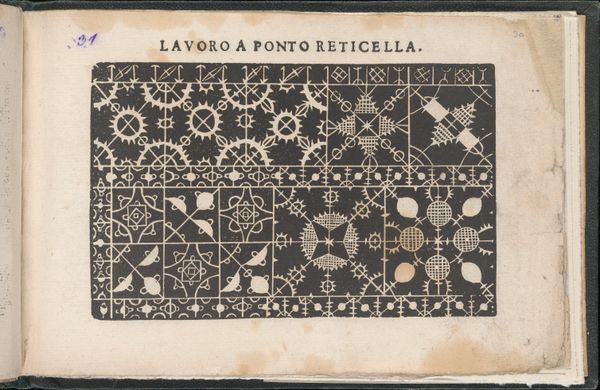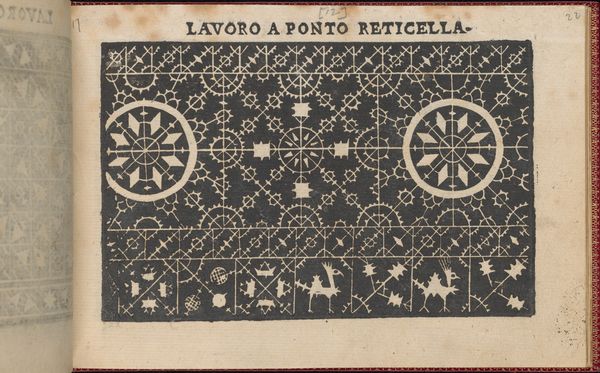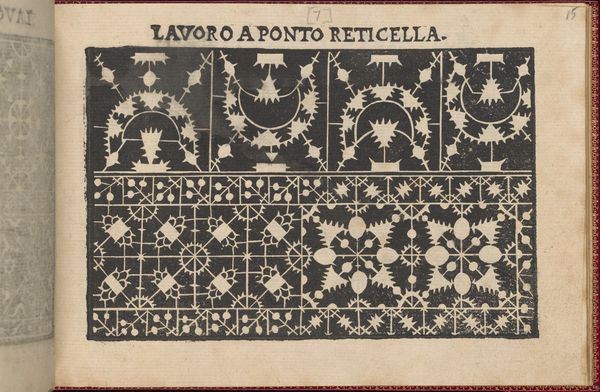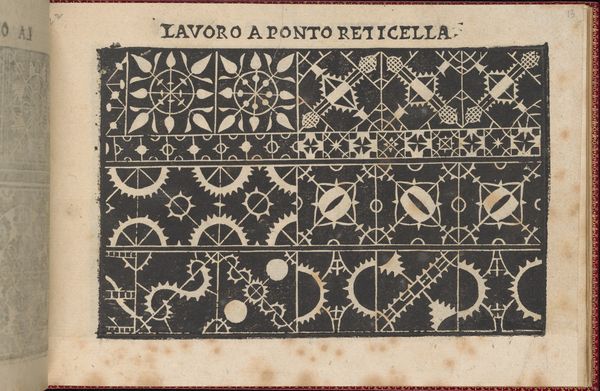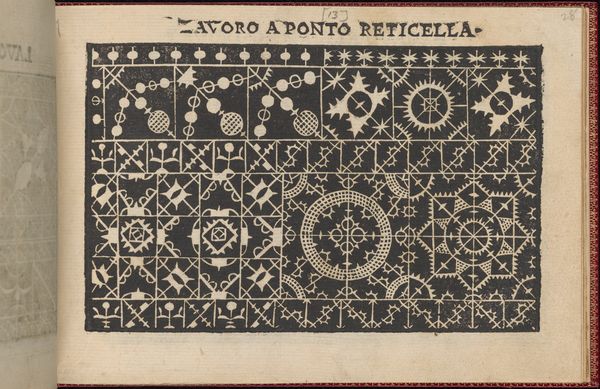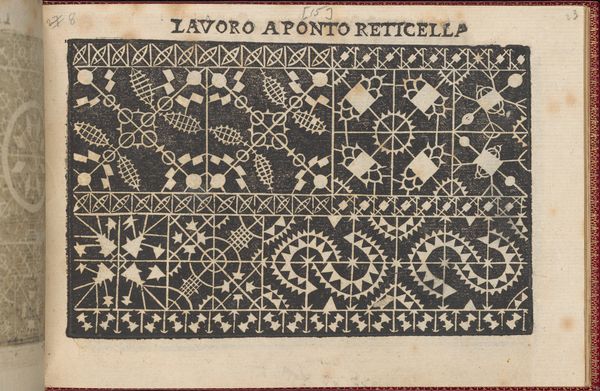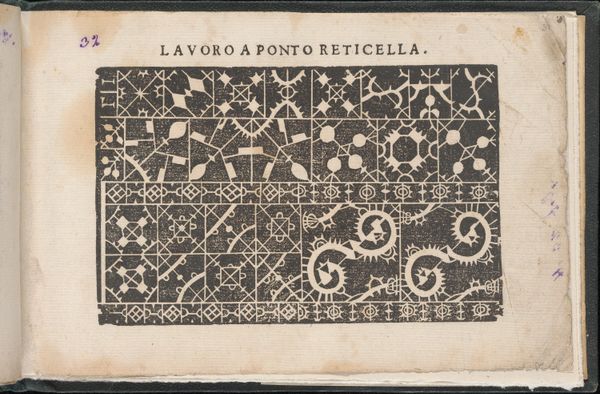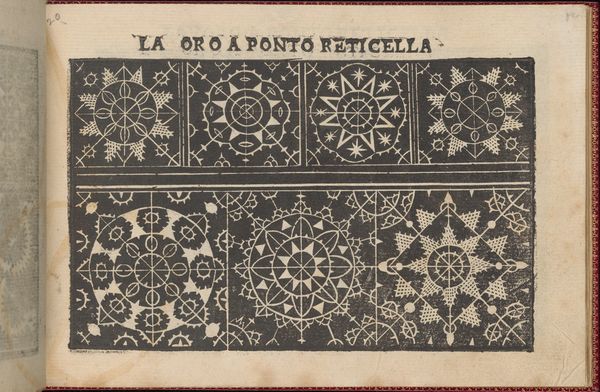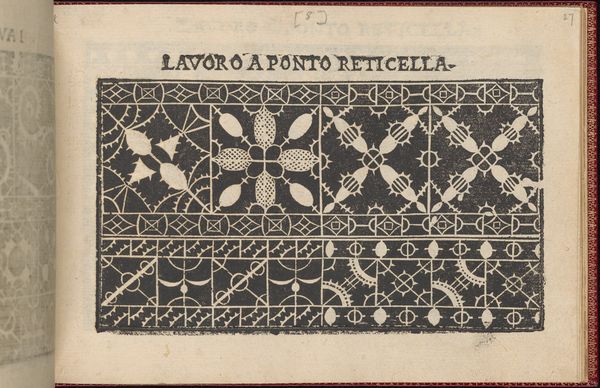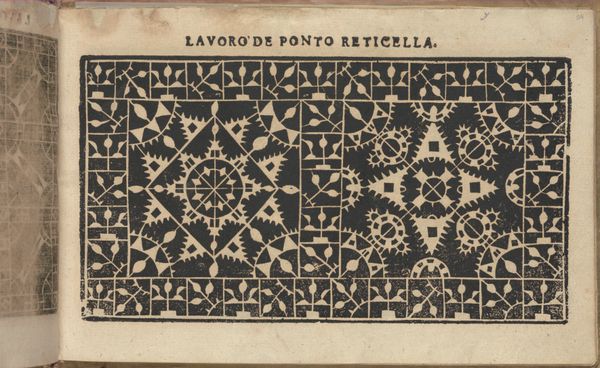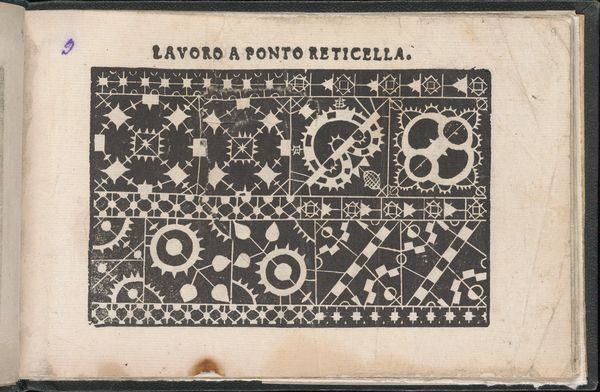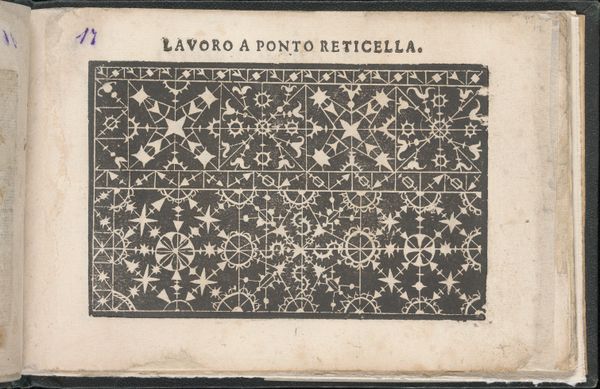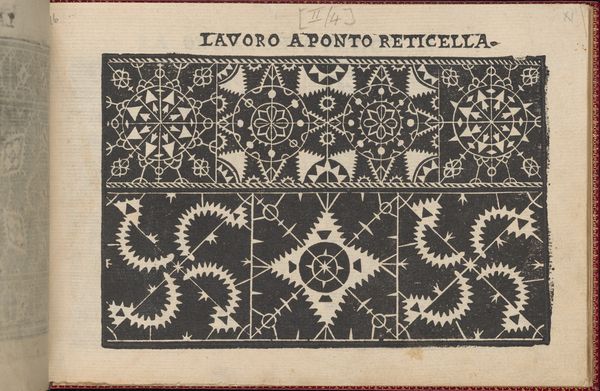
Pretiosa Gemma delle virtuose donne, page 20 (recto) 1600
0:00
0:00
drawing, print, engraving
#
drawing
# print
#
11_renaissance
#
geometric
#
engraving
Dimensions: Overall: 4 3/4 x 6 11/16 in. (12 x 17 cm)
Copyright: Public Domain
Editor: This is page 20 from Isabella Catanea Parasole's "Pretiosa Gemma delle virtuose donne," made around 1600. It’s a print, or perhaps an engraving, showing geometric patterns. What immediately strikes me is how graphic and almost modern the design feels. The high contrast and the repetition of forms are mesmerizing. What do you see in this piece? Curator: The composition compels us to consider the relationship between positive and negative space, no? The stark contrast of the black ink against the page establishes a rigorous visual rhythm. Notice how each geometric unit functions as a discrete system, yet participates in a larger, overarching structure. Consider the variations within the grid: circles, crosses, floral motifs – these subtle shifts create a sense of dynamism. What, to you, does this formal interplay evoke? Editor: It reminds me of textiles, actually. It looks like different weaving patterns combined. Is the modular composition important for something like a design reference? Curator: Precisely. This is not merely decoration; it is instruction. Each block represents a unit of design, intended for replication and adaptation. Focus on the linear quality; each line defines not just a shape, but a pathway for the needle and thread. Consider also the inherent tension between the abstract geometry and the implied functionality. Does this relationship enhance your understanding of the work? Editor: Yes, it does. I see it not just as an image, but a template, a guide, a process. Thanks, I never thought of art this way. Curator: Art is the language with which all structures communicate; once translated, you may decode the most useful things in life.
Comments
No comments
Be the first to comment and join the conversation on the ultimate creative platform.
